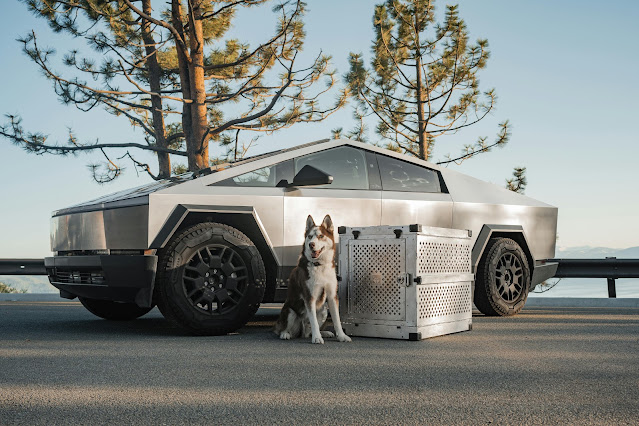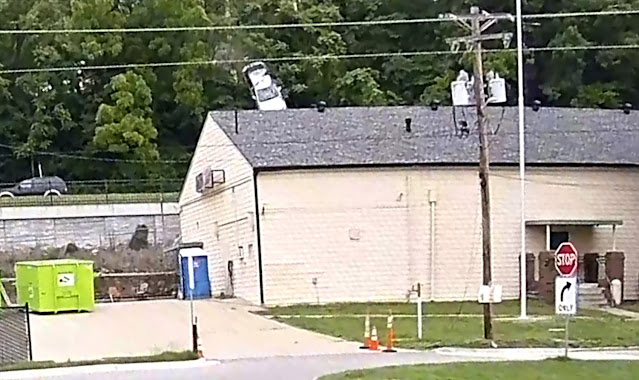🎯
Target Missed… Again? Nope. Nailed the Roof—Twice.
Move over, Florida Man. Missouri just threw its hat into the ring of “You won’t believe this happened—again.” In a tale that would make even cartoon physics blush, a car crashed into the same building roof in Excelsior Springs, Missouri, for the second time in just three months.
Yep. The Clay-Ray Veterans Memorial Hall apparently moonlights as a magnet for airborne vehicles.
The most recent case involved 56-year-old Corrie Wright, who unfortunately, allegedly suffered a seizure while driving and lost control of his vehicle. His car launched off the embankment like something out of a Fast & Furious blooper reel and planted itself in the exact same section of roof still being repaired from the previous crash.
We’re not saying the building is cursed… but the building might be cursed.
🧠 The Plot Thickens: Did the Roof Insult the Car?
 |
| On May 28, 2025, a car goes up in the air and hits the roof of a veterans hall in Excelsior Springs, Missouri. This is the second car in a few months to do so.-KMBC |
The first crash back in February involved a high-speed police chase. This time? A medical emergency. Coincidence? Probably. But if that building gets hit a third time, we’re checking for paranormal activity. Someone call the Ghostbusters or Elon Musk.
Now for the real question: Could a self-driving car have avoided this bizarre sequel?
🤖 Could a Self-Driving Car Have Saved the Roof?
Here’s where it gets interesting—and slightly less funny.
Autonomous vehicles (AVs), including Tesla’s Autopilot and Waymo’s robotaxis, are equipped with sensors, radar, cameras, and AI decision-making. Unlike your Uncle Bob after three Red Bulls, these vehicles are built to think calmly and brake responsibly.
In medical emergencies like seizures, AVs theoretically offer a solution:
 |
Redefining the Pickup TruckWhatever the task, terrain or weather—Cybertruck was designed to do it all. - Tesla.com |
✅ Safety Features That Could’ve Helped:
Driver Monitoring Systems: Cameras track facial expressions and alertness. If a driver goes unresponsive, the car takes over.
Emergency Pull-Overs: Some AVs can automatically pull to the side of the road if the driver is incapacitated.
No Need for Human Reflexes: AVs don’t panic, swerve randomly, or floor it during health episodes.
So in theory, if Corrie Wright had been in a fully autonomous vehicle, the crash might have been prevented. Instead of crashing through a roof like a Kool-Aid Man stunt double, the car could’ve just pulled over and phoned 911.
📉 But Hold the Champagne, AVs Aren’t Perfect
As much as AV companies like to toot their futuristic horns, autonomous vehicles have their quirks too:
Turns are Tricky: A 2024 study found AVs have trouble with unprotected left turns and dawn/dusk lighting conditions. (Apparently, robot cars also hate mornings.)
Too Cautious?: AVs get rear-ended more often because they drive like grandma—with zero risk-taking.
E-Bike Drama: In April, a Zoox self-driving vehicle in San Francisco got into hot water for an incident with an e-bike. Critics say AVs struggle in chaotic city environments.
But let’s be honest—none of these incidents involved taking flight into a roof like a low-budget Marvel movie.
📊 Self-Driving Cars vs. Human Drivers: The Stats
Here’s the data showdown you’ve been waiting for:
Metric | Self-Driving Cars | Human Drivers |
|---|---|---|
Accidents per Million Miles | 9.1 (mostly minor) | 4.1 (often severe) |
Fatalities | Extremely rare | Over 42,000 annually (USA) |
Injury Claims | Waymo: 0 in 3.8M miles | 1.11 per million miles |






